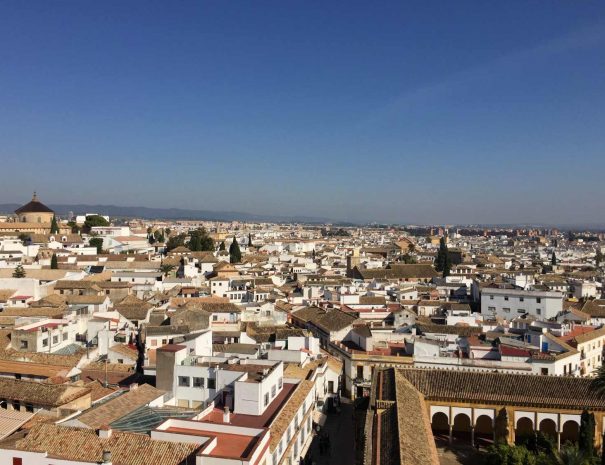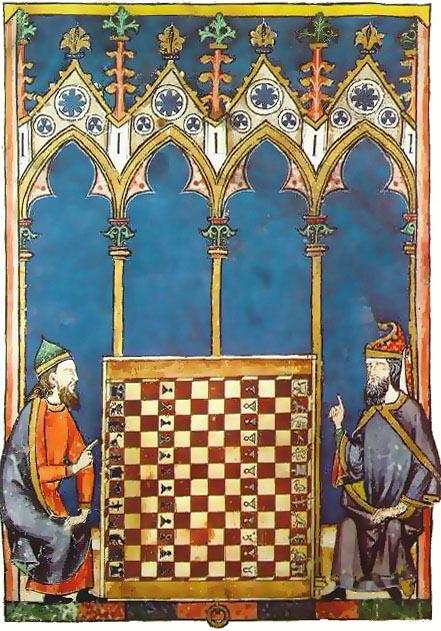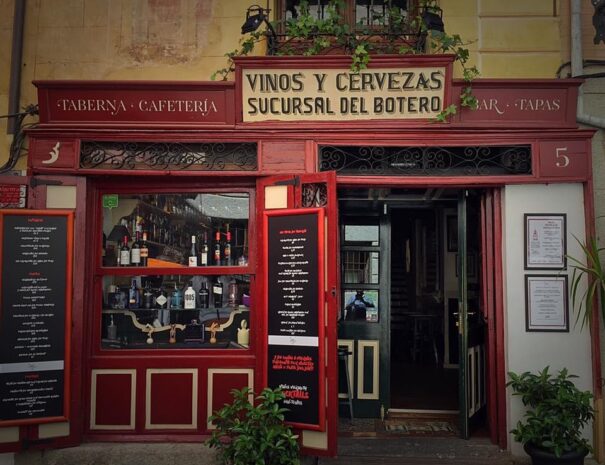
Hidden romantic gems for a Honeymoon in Spain
Most people love romantic places, moreover at the time of planning a honeymoon is involved. We do have selected some of the most amazing romantic spots in Spain. We hope you love them too! … Read More
No one knows exactly when Jews in Spain started to arrive. There are many rumors and legends on the subject that were spread by Jewish and Christian chroniclers, during the sixteenth century.
As the story goes, they began to arrive during the time of King Solomon, following the routes traversed by sailors. Another theory is that they began to arrive after their exile from Judaea, as ordered by Nebuchadrezzar.
Historians place the arrival of the first Jewish settlers in Spain just after the destruction of the Temple in Jerusalem in 70 C.E. They began by settling along the Mediterranean coast and later spread throughout most of the Iberian Peninsula. The first physical evidence we have of the presence of a Jewish community in Spain can be found on a child sarcophagus found in Tarragona and dating from the time of the Roman Empire (now exhibited in the Sephardic Museum of Toledo). It is a trilingual inscription (in Hebrew, Latin, and Greek) that lets s know that there was an established Jewish population. There are other texts that reveal a Jewish presence in Spain during the same period: examples are Flavio Josefo’s The War of the Jews and the Mishna. Also, there is no doubt that the mosaic from Elche (1st century) originally decorated the floor of a synagogue.
The term “Sepharad” has been in use since the eighth century in reference to Spain and the Spanish Jews, and, by extension, has been applied to all the Jews in the communities around the Mediterranean.
Little is known of the Spanish-Jewish communities before the eighth century. During the Roman Empire Jews were considered foreigners, or non-Romans. Under the reign of the Visigoth kings, who were ethnically Aryans, the Jews were tolerated and many lived as farmers.
In 586 King Recaredo converted to Christianity, and the Jews in Spain subsequently endured nearly a century of persecutions and forced conversions.
When Arabs arrived on the Penninsula in 711 Jews allied themselves with them. The Arab forces were in dire need of faithful allies since they were few in numbers. It was actually in the interest of both communities to get along, especially after a large number of Jews from the Maghreb joined the ranks of the Moors and the Jews of the Sepharad.
The importance of this Jewish minority is reflected in the naming of several “Jewish cities” including the southern city of Granada, Tarragona, and Lucena. As urban settlements began to develop there was a growing need for shopkeepers and administrators, functions Arabs and Berbers greatly disliked.

When the caliphate of Córdoba was established in 926 it ushered in a golden age for Judaism in the Islamic lands. King Abderrahman III’s court physician was Hasday ibn Saprut, a Jews from Jaén, entrusting him not only with his personal health but also with diplomatic missions such as contracts with the abbot of Gorze and negotiations with the emerging kingdoms of León and Navarre. Hasday became a rich member of the royal court and his life was recorded by the poets Menahem ben Saruc and Dunas ben Labrat. He organized the translation of numerous works of science from Greek into Arabic and contributed greatly to the cultural prosperity of his community. The example of Arabic poetry inspired Jews to write superb poems and to study grammar.
The three great cultures of ancient Spain, Jews, Muslims, and Christians lived together for centuries and, until 1492. This resulted in different traditions and cultural and religious expressions in many different Spanish towns.
In particular, there are 22 different towns and cities that stand out because of their rich Jewish heritage in Span. Ancient Jewish quarters, old synagogues, museums, history, art, traditions, and unique gastronomy are just some of the relics left behind by the Sephardic Jewish communities.
This spectacular Medieval city of Castilla León will allow you to walk through the winding streets of the old Jewish quarter, with charming low houses. -There are numerous ancient documents that recorded the location of the old synagogues, the rabbi’s house, the cemetery, the shops or the tanneries were. Also in Ávila, you will find the garden of Moshes de León. Here there is a tribute to the author of the Sefer ha-Zohar, who unraveled the mysteries of the Kabbalah. More on Avila

Córdoba features one of the most beautifully preserved Synagogues in Spain with frescoed interior courtyards, the statue of Maimonides or the Puerta de Calahorra, it is one of the historical highlights of the city. The city also has a charming Jewish quarter with its peculiar Andalusian charm.
The city also celebrates a series of annual events related to Jewish cultures such as the “Sephardic Autumn” or the “International Festival of Sephardic Music” which are also of interest. More on Cordoba.

Barcelona is one of the most amazing cities in all of Spain. One of the highlights of the city is the famous Gothic Quarter, where the cities old Jewish quarter was also located, formed by a network of narrow streets and where part of the old synagogue is still preserved.
Here you can find attraction like the Call Visitor Centre that houses a myriad of 13th and 14th centuries artefacts and organises guided tours, tastings of Catalan-Jewish cuisine, conferences… Also, the famous mountain just outside of the city, Montjuïc actually means “mountain of the Jews” and that it was used for centuries as a Jewish cemetery.
Calahorra, located in the community of La Rioja, has a Jewish quarter that was located in the old acropolis of the Roman Calagurris, it had its own defensive wall and amazingly, still preserves the original houses that are still inhabited today.
The Cathedral of Calahorra preserves two fragments of a synagogue Torah discovered in 1929.
Although its first Jewish quarter was in the district of Elgacena, it was abandoned centuries ago and it is believed that its old synagogue was in what is now the Church of Santa María Jus del Castillo. As the years went by, the Jewish presence became more important and the new Jewish quarter was created next to the walls of Belmecher Castle. Did you know that the Estella-Lizarra Jewish quarter was the third most important in the Kingdom of Navarre? Today it is worth taking a walk along the lively “Rúa de las Tiendas” and imagining the activity of the old merchants.
Located in Cáceres in Extremadura is rustic. This city’s Jewish Quarter is filled with many artisan shops and traditional houses traditionally built with adobe and chestnut that have been preserved for centuries and extend to the river Ambroz.
In July, the town celebrates the Fiesta de Los Conversos, or the festival of the converts and it is a great moment to see the inhabitants in period costumes or to taste the Sephardic gastronomy
Jaén in Andalucía (southern Spain) is where the first Jews in Spain settled, and there are still remains and evidence of their presence. The Jewish quarter used to be located between the current streets of San Andrés, Huérfanos, Los Caños-Arroyo de San Pedro and Martínez Molina.
There were also several synagogues located in this area, one used to be attached to the convent of Santa Clara, and what is now the Church of San Andrés itself was once a Jewish temple.
Evidence of the Sephardic past of León can be seen in its passages, cellars, or courtyards, such as that of the Jabalquinto Palace. A famous literary figure Mosé de León was born here in León, author of the “Book of the Zohar”, which is considered to be the main Kabbalistic work. You can also visit the Three Cultures Visitor Centre. More on Leon.
During several archaeological excavations at the famous Lorca Castle, several signs of a Jewish settlement were discovered. The dig revealed that there was a Jewish quarter in the eastern half of the castle. Several houses have been discovered from whose interiors various artifacts have been recovered which are conserved in the Municipal Archaeological Museum.
You can also visit the synagogue, there are a variety of Hanukkah candles, some chandeliers from the Hebrew domestic liturgy, and more than 2,000 glass fragments belonging to some 50 lamps found inside the synagogue.
This beautiful city in the region of Extremadura once had a thriving Jewish quarter known as “La Mota” which was located where today the Palace of the Marquis of Mirabal and the Convent of San Vicente Ferrer can be found today.
It has been documented that the Jewish community of Plasencia during the 15th century the Jewish community of Plasencia was around 200 families and that they had a large synagogue. The old cemetery was located in the Berrocal, one of the few Spanish cemeteries that have been preserved as it was originally. Today you can still see the remains of more than 200 tombs
Segovia is one of Spain’s most famous medieval cities, famous for its impressive Roman Aqueduct and spectacular Alcazar. This city also has a valuable refurbished Jewish Quarter. You can visit the Jewish Quarter Educational Centre, located in the old house of Abraham Seneor, the old main synagogue (now Corpus Christi Church),one of the prettiest synagogues in Spain, and the Gate of Saint Andrew, an exceptional viewpoint to take in views of the Jewish cemetery and its anthropomorphic tombs.
Ribadavia’s Jewish quarter was established between the 12th and 13th centuries and its inhabitants were famous across Spain for their excelled in the administration of goods, in craft trades, and as wine merchants.
The city features an interesting Sephardic Museum, which contains documents and archaeological remains of all the Galician Jewish communities. There are also culinary legacies you can discover in this city. Try the famous traditional Sephardic confectionery and, if you can towards the end of August the Festa da Istoria (Fiesta of Ribadavia History) is held in the heart of the Jewish quarter and showcases one of the most authentic medieval festivals in Galicia.
Lucena, located in the region of Córdoba in southern Spain features several important Sephardic sites including The Jewish Archaeological and Ethnological Museum of the Moral Castle, the Church of San Mateo, the Palace of the Counts of Santa Ana, the district of Santiago or the necropolis. Lucena is known as the “Sephardic pearl” and was home to many poets and sages like Maimonides who lived here in the Middle Ages. Lucena was also the site of the Academy of Talmudic Studies, a meeting point for intellectuals of the time.
Monforte de Lemos is located in teh north of Spain, in Lugo, Galicia. Here tehere is no defined Jewish quarter, instead, Jews shared spaces with Christian families. In Monforte, the Jewish community were generally craftsmen and merchants, and the current street names reflect that. There used to be a synagogue and, to this day it is possible to come across stars of David carved into the stone (for example, in the Tower of Homage) or the houses of the Gaibor.
Sangunto features one of the best-preserved Jewish Quarters in the country. Sagunto has had a thriving Jewish community since the first century. If you are visiting Sagiunto make sure you visit “Portalet de la Judería” and explore the streets of Antigons, Ramos, Segovia, or Sangre Vieja, where the synagogue used to be.
There are other important Jewish sites like Casa dels Berenguer – with pieces related to the Jewish ritual bath or mikveh -or in its visitable Jewish cemetery.
Trazona in Aragón is a wll preserved medieval city. Its famous Jewish quarter is divided into two different centres. Make sure to visit the Hanging Houses, where noble families used to reside, or passing.
In what is now the Plaza de los Arcedians Jews once set up their tents to celebrate sukkot and in the new Jewish quarter, you will find, for example, the house of the Santafé, who were great Jewish merchants, is preserved.
Tudela was the birthplace of the famous explorer Benjamín de Tudela, and the Jewish quarter of Tudela was an outstanding center in medieval Navarra. The town once was home to at least three synagogues in the old Jewish quarter, and two in the new one.
The Jewish quarter retains its layout and the unquestionable Hebrew style of narrow streets as well as adobe and brick houses with Mudejar decoration. This is also the birthplace of the famous Jewish sage Abenezrá, creator of the number zero.
Another of Spain’s most famous Medieval cities, Toledo is located in Castilla la Mancha. The Jews from Toledo were the most important in Spain. Today there is still an entire urban labyrinth, practically intact, within the city walls.
There are two essential synagogues to visit in Toledo: the beautiful temple of El Tránsito, now the Sephardic Museum, where you can learn more about the history of the Jews in Spain, and the gorgeous Synagogue of Santa María la Blanca, the oldest in Spain and inspired by Almohad art. In addition to the synagogues, there is also the Casa del Judío, a house that preserves the traditional rooms.
In July, the town celebrates the Fiesta de Los Conversos, or the festival of the converts and it is a great moment to see the inhabitants in period costumes or to taste the Sephardic gastronomy
Tui in Pontevedra, Galicia, on the border with Portugal features a Jewish Route to discover the sambenitos, a series of posters and propaganda, created to defame the reputation of the Jewish inhabitants of Tui located in the Diocesan Museum.
You can also visit The Solomon House who’s rooms were all adapted to Sephardic life, the Casa dos Capellanes or the menorah – seven-armed candelabra – which is preserved in the Gothic cloister of the Cathedral.
Oviedo is located in the north of Spain, in the Principality of Asturias, and is the capital of the region. Oviedo was once a significant Jewish enclave during the Middle Ages.
The city once had a synagogue, one of the most important synangogues in Spain that was located within the cities old quarter, within the walls of the city through which Jews moved freely.
Head to Plaza Porlier to consult the map of the Jewish settlements, which had a border with Plaza Juan XXIII square.

Most people love romantic places, moreover at the time of planning a honeymoon is involved. We do have selected some of the most amazing romantic spots in Spain. We hope you love them too! … Read More

Check out our full guide to Water Sports In Spain. If you are looking to do something more than just chilling on the beach this list is for you. … Read More

Each 15th of May in Madrid is the festival of San Isidro, the patron of Madrid. For a period of five days, locals take to the streets to celebrate their pilgrimage in the Pradera of San Isidro and also to enjoy music, dancing and Madrid cuisine in the gardens of the Vistillas.
The day before the party, in the streets of downtown Madrid, you can hear the excitement from the Parade of Giants, announcing the arrival of the Proclamation that occurs on the afternoon of the 14th on Plaza de la Villa. … Read More

Here you will find a list of the top 15 most famous Spanish people and a brief description of their contributions to Spanish culture. … Read More

A list of the best restaurants in Toledo. If you are planning a visit to Toledo, and you are looking for a great place to eat, this is the list for you. … Read More

We have announced the winners of our short story contest 2017. This year we have opted to be creative. The them was science fiction and we asked writers to think about this question. What would aliens think about wine? … Read More
is proudly powered by WordPress